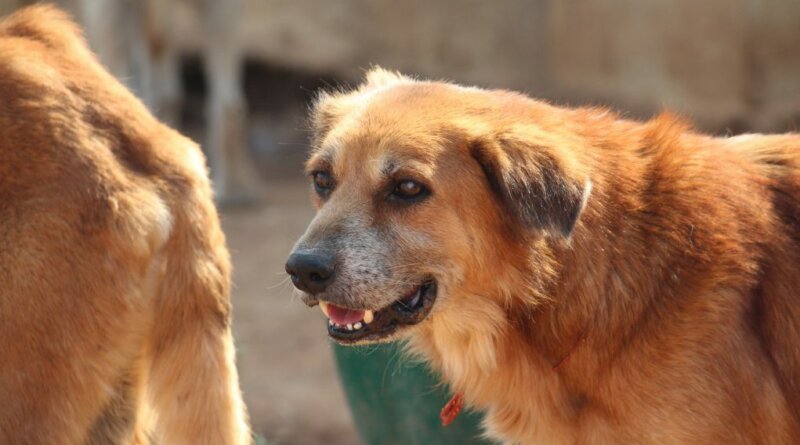Indian Dog Breeds You Probably Don’t Know About
We are all guilty because most of the dogs we pick to live with must be pedigreed breeds. However, unpopular dog breeds tend to suffer in such a quest of modernity, including the Indian dog breeds.
Most dog breeds we see today, such as the Dalmatian, German Shepherd, Pug, and Saint Bernard, are chosen because of the influence of the media.
Most of these breeds are unheard of, let alone seen by most local people in India due to neglect. The foreign breed craze resulted in the near-extinction of several Indian dog breeds.
This article will talk about some of the breeds that have existed in India then and until now.

Indian Dog Breed #1: Gull Terrier
The Gull Terrier, also known as the Gull Terr or Bully Gull Terr, is an old breed originating from India and Pakistan dating back to the British Raj.
During this time, the British brought many foreign canines, including the Bull Terrier. Thus, when the Bull Terriers crossed with native landrace breeds, it resulted in the Gull Terriers we know today.
However, the Gull Terrier did not end there. They crossed with other local breeds to produce even more distinct Indian dog varieties. Consequently, the Gull Terrier resulted having an aggressive temperament.
Nonetheless, bear in mind not to trust them with just anyone. Otherwise, this breed will attack anytime it senses a threat, even if it’s with children.
On the other hand, a Gull Terrier is a tall, broad-chested, medium-sized molosser dog with large erect ears. Although their coats are white, sometimes, they have scattered dark-colored markings all over their faces and bodies.
This breed is prone to deafness and blindness, but no common medical problems are affecting these dogs.

Indian Dog Breed #2: Gull Dong
The Gull Dong is a rare Indian dog breed originating from the subcontinent. However, other historians consider the idea that this breed originated in Pakistan.
Nonetheless, this breed has gone by various names throughout the years. Ere the name Gull Dong, they were the Indian Bulldog or the Bully Gull Terr.
As mentioned above, Gull Terriers came to India because of British merchants during the British Raj. As a result, Gull Terriers crossbred with some local Indian dog breeds, such as the Bully Kutta, resulting in the breed we know today, Gull Dong.
In addition, since both of Gull Dong’s parent breeds are naturally aggressive, they are likely to be one too.
Physically, the Gull Dongs have a similarity to the Staffordshire Bull Terrier. They have the short snout and the small ears that have become “signature traits” seen in bulldog-type breeds.
In addition, Gull Dongs will often sport a short and smooth coat with white and occasional dark-colored markings on the face and body.
They are also a healthy breed, with a lifespan of ten to twelve years. You can spend a lot of time with them, although they are inclined to acquiring deafness as they get old.

Indian Dog Breed #3: Kumaon Mastiff
The Kumaon Mastiff, also known as Cypro Kukor, is a ferocious molosser-type dog from the Indian state of Uttarakhand.
However, like many other Indian dog breeds, the Kumaon Mastiff is at risk of extinction due to obedience training and socialization difficulties.
Kumaon Mastiffs are highly protective, which explains why they used to be powerful guard dogs. Unfortunately, there isn’t a lot of information about these canines in a family environment.
These Mastiffs have a short, silky coat that is generally brindle or different colors of brown.
They may reach a height of 28 inches (at the shoulder) and weigh well over 100 pounds. This breed also has an uncanny similarity to older, more aggressive Great Danes.
They are a pure, primitive breed of dogs, so they don’t have any observable genetic disorders.
However, just like other dogs with age, they are inclined to health problems such as Canine Hip Dysplasia (CHD) and Gastric Torsion.

Indian Dog Breed #4: Mahratta Greyhound
Historically, there are certain uncertainties regarding Mahratta Greyhounds lineages. Some accounts say that they descended from a couple of indigenous breeds, while some are not.
Only one thing is for sure; this breed originated from India.
Long ago, Mahratta Greyhounds may be a popular breed. However, these dogs are now considered tare in today’s time, even in their own country.
On the other hand, Mahratta Greyhounds are hunting dogs that are bold and fearless. They can locate wild animals from a long distance due to their excellent eyesight.
Furthermore, with exceptional speed and strength, the Mahratta can effortlessly run after their prey in no time. Thus, unlike other dogs, Mahratta dogs are more likely to be hunting than home companions.
Concerning that, there is little information on the characters and personalities of these hounds in a family environment. Even so, we do know they are faithful and loyal hunting companions.
In addition, Mahratta Greyhounds frequently get compared with the Saluki breed, the royal dogs of Egypt. Although the former has a less sleek coat than the latter, it is sufficient to shield them from the harsh Indian environment.
Moreover, Mahratta Greyhounds are slightly smaller with approximately 21 inches tall. Their legs are small but surprisingly strong, providing the speed and agility required to track their prey.
With a life span of 10 to 12 years, the Mahratta Greyhound is a healthy breed. However, it would be best to be wary of the sickness they might acquire because of old age, like deafness and hip dysplasia.

Indian Dog Breed #5: Vikhan Sheepdog
The Vikhan Sheepdog is an Indian and Pakistani dog breed that only a few locals are familiar with. Since this breed originated in different countries, experts also found their first evidence in two locations.
The Vikhan Sheepdog is a breed developed to defend livestock. Unfortunately, we don’t know much about these canines because of their scarcity.
Nobody knows how close they are to extinction since only a small number of people have even heard of them. Furthermore, fewer and fewer individuals are making efforts for preservation.
However, we know that these dogs are highly territorial and aggressive. Thus, you have to be strict and specific in their training to keep them from destructive behaviors.
On the other hand, Vikhan Sheepdogs have a thick coat in solid brown, red, fawn, or black, and there are also multi-colored and spotted versions.

#6: Chippiparai
Chippiparai is probably India’s most well-known and popular dog breed. If you ask the locals what they think of when they hear “Indian dog,” most of them will surely answer Chippiparai.
Historically, this breed was bred and owned by royal families of Chippiparai for many generations in Tamil Nadu, India. Amongst these royal families are the Tirunelveli and Madurai rulers.
Aside from being the royal family dog, the Chippiparai breed are also hunters of several small prey like rabbits and pigs. But they can also hunt bigger ones like deer, wild boar, and hare.
Since Chippiparai dogs are mostly part of India’s wealthy class, they symbolize grandeur, royalty, dignity, and nobility.
On the other hand, a Chippiparai’s coat is short and plain. However, and comes in various colors, including fawn and white, brindle and white, fawn, grey brindle, and red.

#7: Rampur Greyhound
The Rampur Hound is a dog breed that originated in India’s West Bengal region. Although they are rare, they are some of India’s most recognizable canines.
According to historians, they were the dog of choice for India’s princes, thus gaining popularity. However, with the influx of foreign breeds, their popularity has suffered significantly.
Rampur is a breed of loving dogs devoted to their owners as they enjoy human company and attention. However, playing with them might be a little frightening because of their hyperness.
Despite that, once you get to know them, you’ll understand that this is just how they play. Hence, if adequately trained, this breed typically gets along well with children, developing their innate protective instincts.
On the other hand, Rampurs have a short and smooth coat in various colors like gray, black, white, brindle, and fawn. But due to their fragile skin, Rampurs are likely to have bedsores.
Overall, Rampur Hounds is a healthy breed.
#8: Kombai
Accordingly, the Kombais is a native dog breed to Kombai, Tamil Nadu, a state in the Southern part of India.
At the beginning of the 19th century, Kombais became a part of a significant revolution of the Marudhu brothers against the British subjugation.
Although they were near extinction, breeders and kennel associations in India have worked hard to repopulate them. Up to this day, this breed continues to be a popular pet among the Indian people.
On the other hand, the Kombai breed is closely similar to terrier dogs. Thus, they earned the name “Indian Terrier.”
They also have become the standard for Indian Guard Dogs. Despite that, Kombais still tend to have a laid-back attitude, making them appear lazy at times.
Subsequently, Kombais have a short but silky coat. Their coat is reddish-brown in hue, with a somewhat lighter saddle and a black muzzle.
Besides, they have dark eyes, long ears with bent ends like sighthounds, and a beautiful nose. Their tail is long and tapering, and it is held coiled over its back.

#9: Pandikona
It has always been a curious case how the Pandikona breed developed and promulgated. According to many, this breed is a “primitive breed,” which implies that Pandikona have bred on their own without any help.
The locals most likely spotted the dog and named them after their town, Pandikona.
However, when the British came to India, they noticed the similarities between them and the Doberman. Since then, they were also called “Indian Dobermans.”
They mostly hunt small wildlife such as boar, rabbit, and hare. But it can also be venomous snakes, rats, and other pests around the village.
Besides, Pandikonas were used as guard dogs too. Since their character includes being intensely territorial, these dogs are perfect for guarding your property or livestock.
However, Pandikonas are now on the verge of extinction. In India, almost less than a thousand Pandikonas still exist in the whole country.

#10: Taji (Tazi)
The Taji, sometimes known as the Tazi, is a hunting dog breed that originated in India. Unlike traditional dog breeds, these dogs prey on larger animals such as foxes, gazelles, wildcats, and marmots.
There are several things we don’t know about the Taji breed. Aside from being one of the oldest dog breeds, only a few Taji’s remained in the whole world, including India.
However, Taji dogs, according to the few known owners, are typically energetic. And one of the few things that make them happier is running with their owners.
The Russian Taji (Tazi) is their most closely related breed. But they are bigger and have more fur on his coat.
Taji dogs are medium-sized dogs with deep chests and long legs, short hair on the body, and longer hair on the tail and ears.
Conclusion
As you finish this article, you have probably realized by now how much of these local breeds are slowly dying.
Thus, you may start wondering, how could this happen in the first place? Well, to answer your question, several factors play in such a problem.
People in India have fallen in love with western dog breeds for various reasons during the last several decades. However, up to this day, their fascination for those breeds continues.
Regardless, let’s learn how to appreciate the popular breeds and focus on propagating their population.
This support will not only help us understand more of what’s ours. But it will also keep our roots from getting erased off the map.
READ NEXT: 20 Most Ancient Dog Breeds
Related





